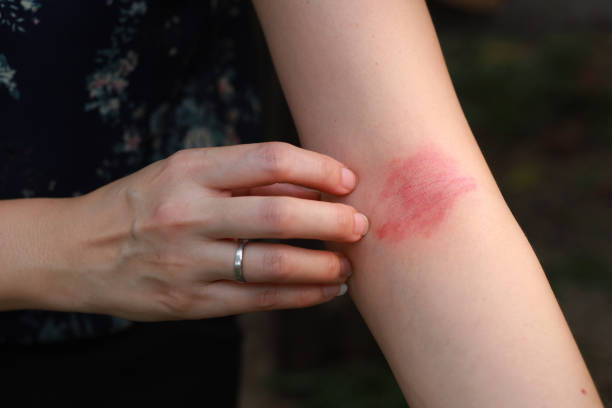By Dr. Luigi Cornacchia, Dermatologist at Aventino Medical Group, Rome
Introduction
Hives, dermatitis, itching — the skin is often the first organ to show signs of an allergy. It acts as a protective barrier between the body and the external environment, reacting immediately to potentially irritating or sensitizing substances.
But what are the most common allergens in Rome? And how can we protect the skin while traveling to different climates? Let’s explore risk factors, symptoms, and strategies to keep your skin healthy and protected.

Skin allergies: when and why do they cccur?
Skin allergies are immune system reactions to substances that are usually harmless. When the skin comes into contact with an allergen, it triggers an inflammatory response, causing uncomfortable symptoms such as itching, redness, swelling, or rashes.
Symptoms may appear immediately or a few hours later, depending on the type of allergy.
Common symptoms include:
- Hives: Red, raised welts that cause intense itching.
- Contact dermatitis: Localized irritation due to contact with allergenic substances.
- Atopic eczema: Chronic inflammation, particularly affecting children and predisposed individuals.
- Angioedema: Deep swelling of the skin, often associated with hives.

The most common allergens in Rome
Rome’s Mediterranean climate brings a range of environmental allergens that can trigger skin reactions. The most frequent include:
- Seasonal pollens: Cypress, Parietaria, grasses, and ragweed are among the top pollen allergens in the city.
- Dust mites: Highly present in indoor environments, especially during humid months.
- Air pollution: Particulates and smog can compromise the skin’s barrier and provoke inflammatory responses.
- Metals in jewelry: Nickel and cobalt are common causes of contact dermatitis.
- Cosmetics and perfumes: Some ingredients in creams, makeup, and deodorants may irritate sensitive skin.

Protecting the skin in different climates
Traveling and environmental changes can trigger skin allergies, as the skin is exposed to new climatic conditions and potential irritants.
In cold climates: Dry air and low temperatures may dehydrate the skin. Apply emollient creams and wear gloves and scarves to protect it.
In hot and humid climates: Sweat and moisture can lead to dermatitis and irritation. Choose breathable clothing and gentle cleansers.
In highly polluted areas: Using barrier creams and specific cleansers helps minimize the impact of pollutants.

Diagnosis and allergy testing
If a skin allergy is suspected, consulting a dermatologist for an accurate diagnosis is essential. The most commonly used tests include:
- Patch test: Application of small amounts of allergens to the skin to detect any reaction.
- PRIST and RAST blood tests: Used to identify specific IgE antibodies.
- Hydrolipid film analysis: Assesses the skin’s hydration and protective barrier status.

Treatments and preventive strategies
Treatment depends on the underlying cause and the severity of the allergic reaction. Effective solutions include:
- Identification and avoidance of known allergens: essential to prevent recurrences.
- Hypoallergenic moisturizing creams: help restore and strengthen the skin barrier.
- Topical or oral corticosteroids: used to reduce itching and inflammation.
- Oral antihistamines: indicated in cases of widespread urticaria.
- Phototherapy: treatment with highly specific UV light for certain forms of resistant eczema.
- Biologic drugs: recommended for resistant forms that significantly impact quality of life.

Conclusion
Skin allergies can be bothersome, but with proper prevention and targeted treatment, they can be well managed.
If you’re experiencing unusual skin reactions, book a dermatology appointment at Aventino Medical Group — together we’ll find the most effective solution for you. 😊
